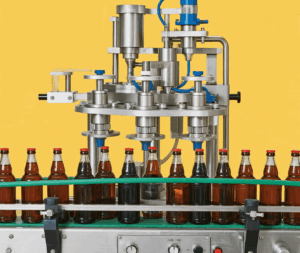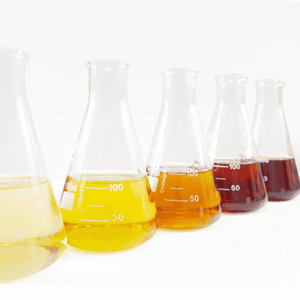Bottle filling and capping machines have evolved from simple mechanized tools into complex, multifunctional assets.
Modern production demands higher throughput, strict hygiene requirements, precise dosing, and flexible changeovers, and modern filling and capping equipment meets these demands with a range of advanced features.

Table of Contents
TogglePrecision Filling and Dosing in Bottle Filling and Capping Machines
- Accuracy is the cornerstone of any high-quality filling process. Modern bottle filling and capping machinesutilize technologies such as servo-driven piston pumps, mass flow meters, and volumetric metering systems to achieve repeatable filling accuracies typically within ±0.5–1%.
- These systems reduce product giveaway and ensure regulatory compliance in industries where precise dosing is crucial. Advanced models include real-time feedback loops and automated calibration routines, eliminating the need for constant manual adjustments to maintain fill accuracy over long production runs.
Flexible Compatibility and Fast Changeover in Bottle Filling and Capping Machines
Today’s manufacturers often produce multiple SKUs on a single production line.
- Modern machines are designed for quick changeovers: adjustable nozzles, modular tooling, and recipe-based settings allow operators to switch bottle sizes, fill volumes, or cap types in minutes.
- Bottle filling and capping machineswith modular mechanisms and quick-release components minimize downtime and support small-batch production or seasonal product lines, enabling businesses to respond to market demands.
Bottle filling and capping machines with automated and intelligent capping
- Capping is more than just applying a cap; it’s also about consistent torque, tamper-evident features, and leak prevention.
- Modern machines utilize servo- or torque-controlled capping heads that apply precise, programmable torque for screw caps, pump dispensers, press caps, and tamper-evident closures.
- Many systems integrate cap positioning and feeding mechanisms to automatically sort and convey caps, while sensors verify correct cap placement and confirm torque thresholds, allowing bottles with under- or over-caps to be rejected before they reach packaging.
Bottle filling and capping machines feature user-friendly HMIs and control systems.
- Modern bottle filling and capping machinesfeature user-friendly interfaces, including touchscreen panels, graphical recipe selection, and guided troubleshooting.
- Operators can store settings for multiple products, dynamically adjust parameters, and monitor performance metrics such as fill rate, rejections, and run time.
- User-friendly control systems shorten training time and reduce human error, making it easier for small teams to run complex production schedules.
Hygienic Design and Cleanliness of Bottle Filling and Capping Machines
For food, beverage, and daily necessities manufacturers, hygiene is non-negotiable.
- Leading machines are constructed with stainless steel and food-grade components, sloped drainage surfaces, and minimal crevices where residue can accumulate.
- Features such as clean-in-place functionality, quick-disconnect fluid paths, and easily removable nozzles speed up sanitation cycles and help maintain GMP or HACCP standards.
Well-designed bottle filling and capping machines help prevent contamination and simplify compliance audits.
Bottle Filling and Capping Machines Offer High Throughput and Stable Performance.
Speed is important, but quality is even more so. Modern filling and capping systems strike a balance between high throughput and stability, offering multi-head filling options and rotary or linear configurations.
They can handle hundreds to thousands of bottles per hour, depending on the model and product viscosity. A well-designed production line can increase production uptime while maintaining quality.
Bottle Filling and Capping Machines Enable Waste Minimization and Product Recovery
Reducing waste directly impacts profitability. Modern bottle and can capping machine technology includes recovery lines.
Precise controls help avoid overfilling, and automatic shutoff sensors prevent spillage if the bottle is misfed. These features not only conserve product but also reduce cleanup time and environmental impact.
The Role of Bottle Filling and Capping Machines in Energy Efficiency and Sustainability
Sustainable manufacturing is becoming increasingly important.
- Modern bottle filling and capping machines often integrate energy-efficient components such as servo motors, variable frequency drives, and optimized pneumatic systems to reduce power consumption.
- Furthermore, materials and designs that promote a longer service life and minimize maintenance help reduce lifecycle environmental impact, which benefits both operating costs and brand reputation.
Industry 4.0 Connectivity and Remote Diagnostics in Bottle Filling and Capping Machines
The smart factory trend has brought connectivity to the production floor.
- Many modern machines support OPC UA, Ethernet/IP, or other industrial protocols, allowing supervisors to collect and analyze performance data, schedule predictive maintenance, and integrate machines into manufacturing execution systems.
- Remote diagnostics and cloud-based monitoring enable faster troubleshooting and minimize downtime, making them particularly valuable for operators managing multiple lines or remote facilities.
Maintainability and After-Sales Support for Bottle Filling and Capping Machines
- Modern bottle filling and capping machinesare designed for easy maintenance: standard spare parts, clear access panels, and diagnostic readouts help reduce mean time to repair.
- Choosing a supplier that offers training, fast parts delivery, and preventative maintenance programs ensures the machine remains a reliable asset throughout its lifecycle.
Conclusion
Modern bottle filling and capping machines are a powerful combination of precision engineering, hygienic design, intelligent controls, and smart connectivity. These features combine to create production lines that are faster, cleaner, more flexible, and more cost-effective than ever before.
Investing in modern filling and capping technology is more than just an automation upgrade; it’s a strategic move to improve product quality, increase yield, reduce waste, and future-proof your manufacturing operations.
0



